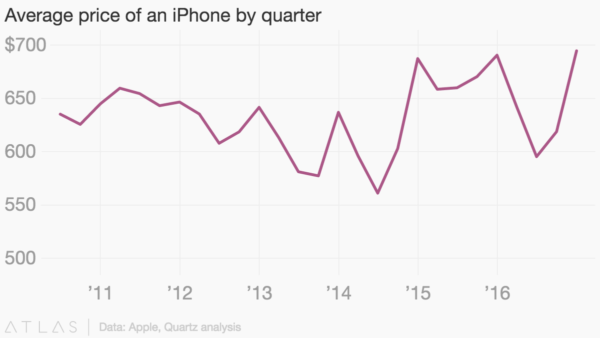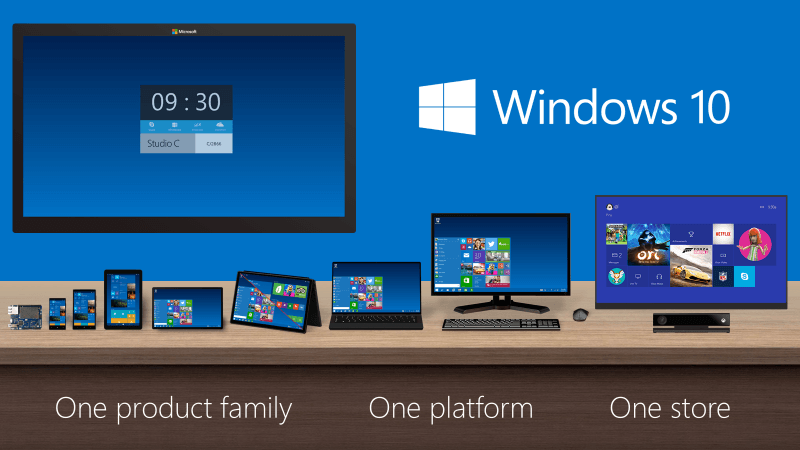What is the best way to pay for a $1,200 iPhone? For many, the answer will be Apple’s official monthly installment plan. Just sign on the dotted line and shell out cash to the world’s wealthiest company every single month.
Though the iPhone Upgrade Program is ostensibly a way to pay for one iPhone over a period of 24 months, it’s designed to lock you in forever. That may be an agreeable prospect for anyone who imagines they’ll never want a smartphone that isn’t branded by Apple, but ceding more of your life to yet another gilded monolith in Silicon Valley — well, we wouldn’t recommend it.
Here’s how this works: Enroll in Apple’s plan and you’ll receive an installment loan that you’ll pay off, with 0 percent interest, over the course of 24 months. That loan covers a new iPhone, AppleCare+, and any activation fee for your carrier. Currently, the most expensive plan is for the 256GB iPhone 7 Plus, a $969 device that you pay off in $45.75 chunks. (The 24-month price is slightly more than the base $969 at retail because of the cost of AppleCare+, which you might opt out of otherwise.)
The “iPhone X” is rumored to cost as much as $1,200, a painful sum that will look much more reasonable sliced into 24 gobs. But the Upgrade Program sets a bad precedent. You don’t have to complete your loan to get a new iPhone every year: You just need to pay off 12 portions, and then you’re eligible for an upgrade. Trading in your iPhone for a new one triggers the plan all over again, putting you on a hamster wheel of endless upgrades and cash paid to Apple.
If you don’t upgrade every year and choose instead to pay off and own your iPhone after two years, you’re left with a less valuable, outdated device. And if you do upgrade, the single benefit is dodging a one-time payment of around $1,000: not a minor thing, but a questionable one all the same. Every benefit is reserved for Apple. Namely:
- The iPhone Upgrade Program keeps you locked into Apple’s ecosystem. If you can upgrade to a new iPhone every year, with no obvious downside, why wouldn’t you? Thus, you will always be inclined to purchase a new iPhone when the time comes to replace your device, rather than buying a phone from a competitor.
- It forces you to buy AppleCare+. Not a major expense in the grand scheme of things, but an otherwise avoidable one all the same.
- You’ll keep buying new iPhones. Great for Apple’s bottom line! Who would say no to a new iPhone every year if the asking price doesn’t appreciably increase? The difference in monthly payments between a $969 iPhone 7 Plus and a $1,200 iPhone X would be less than $10, which might be easier to swallow than $231 all at once.
- Apple gets your old iPhone, which it can refurbish, and re-sell. Maybe it’s not fair to call this “greedy,” exactly. Although, screw it, it’s greedy: When you turn your iPhone back in after 12 months, Apple can turn around and sell it for something close to full price (typically, they’re sold for 15 percent off), which means you’ve essentially paid for a year-long iPhone rental.
- It helps Apple control, and drive up, the base price for the iPhone. The average price paid for iPhones has increased over the past couple of years, as noted by Quartz reporter Mike Murphy in this grap
This is because Apple is adept at finding new ways to push consumers toward more expensive options, like the “Plus-sized” iPhone and higher storage tiers.
The introduction of a substantially different (and more expensive) iPhone X this year will help Apple carve out another premium-priced niche: smartphones with small front bezels, large OLED screens, and no home button. It, along with similarly sleek devices like the Galaxy Note 8 offered by competitor Samsung, will make even the recent iPhone 7 look less desirable to consumers the next time they upgrade. They may not buy it this year, but they might in 2018—Apple has pulled similar tricks in the past.
To be clear, none of this is really a case against Apple offering a bonkers-expensive iPhone, except to say that such a pricey device will naturally push consumers toward a manageable monthly plan. The problem is chiefly that installment plans like this — competitors like Samsung offer them, too — trap people in a system wherein corporations win while individuals are left with fewer good options.
If you were to buy an iPhone X for $1,200 outright, you would be able to resell it for a substantial portion of what you originally paid. And then you could switch to whatever device you want.
What we should all want to avoid is a moment in time when every good smartphone has such a hefty asking price. In 2017, a smartphone is close to a necessity: 75 percent of Americans own them overall, according to the Pew Research Center, and 64 percent of lower-income Americans do. It’s a ways off, given the amount of affordable phones on the market, but the worst thing we can accept now is the idea that consumers should enter into a contract with another tech corporation requiring them to pay back a loan every month simply to access a core piece of technology. It’s bad enough that we already deal with such rigid contracts from telecoms.
Get the iPhone X if you must; just think about how you choose to do so.







